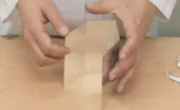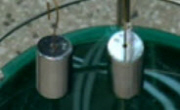본 논문은 파동에서 도출되는 파상선을 도자 조형으로 표현하는 것에 목적을 둔 연구이다. 빛과 소리뿐만 아니라 입자까지 아우르는 물리적 개념인 파동은 수식과 좌표를 통해 다양한 곡선...
http://chineseinput.net/에서 pinyin(병음)방식으로 중국어를 변환할 수 있습니다.
변환된 중국어를 복사하여 사용하시면 됩니다.
- 中文 을 입력하시려면 zhongwen을 입력하시고 space를누르시면됩니다.
- 北京 을 입력하시려면 beijing을 입력하시고 space를 누르시면 됩니다.
파동의 성질을 형상화한 도자 조형 연구 : 코일링 기법을 중심으로 = A Study of the formative Ceramics by shape the properties of waves -Focused on Coilling technique
한글로보기https://www.riss.kr/link?id=T17077023
- 저자
-
발행사항
서울 : 서울여자대학교 일반대학원예체능계열, 2024
-
학위논문사항
학위논문(석사) -- 서울여자대학교 일반대학원예체능계열 , 조형학과 도자공예전공 , 2024. 8
-
발행연도
2024
-
작성언어
한국어
- 주제어
-
발행국(도시)
서울
-
형태사항
90 ; 26 cm
-
일반주기명
지도교수: 박종진
-
UCI식별코드
I804:11036-200000810943
- 소장기관
-
0
상세조회 -
0
다운로드
부가정보
국문 초록 (Abstract)
본 논문은 파동에서 도출되는 파상선을 도자 조형으로 표현하는 것에 목적을 둔 연구이다. 빛과 소리뿐만 아니라 입자까지 아우르는 물리적 개념인 파동은 수식과 좌표를 통해 다양한 곡선의 집합체인 파상선으로 가시화된다. 연구자는 파동의 주요한 성질인 리듬과 반복이 점토의 가소성을 통해 표현하기에 적합하다고 판단하였으며, 이를 직관적으로 표현하기 위하여 수학과 예술의 융합을 고려하였다. 본 연구에서는 점토의 내·외부 구조에 수식과 그래프로 도출한 파상선을 도입하여 파동의 형상을 조형화하고자 했다.
연구는 이론적 고찰, 사례연구, 작품연구로 구성하였다. 이론적 고찰에서는 물리적 성질인 파동의 개념과, 수리적 관점에서의 고찰을 통해 두 개념의 밀접한 관계를 살펴보았다. 이어서 예술에서 파동의 성질을 활용한 선례를 살펴보기 위해 고미술, 현대미술, 도자, 미디어아트, 음악에서 파동을 개념적, 시각적 요소로 작품에 활용한 사례를 조사하였다. 다음으로 다양한 곡률을 접목한 파동의 형상을 도자 조형으로 구현하는 데에 있어, 자유로운 도자 성형 기법인 코일링 성형 기법으로 제작하는 것이 적합하다고 판단하였다. 이에 따라 코일링 성형 기법의 발단과, 작품 사례를 중심으로 고찰하였다.
다음으로 사례연구에서는 수리적 개념의 시각화를 시도한 조각가 찰스 오웬 페리, 기물의 내·외부를 표현의 수단으로 하여 다층 구조를 제작한 윌리엄 데일리, 그리고 자연과 수학의 원리를 도자 조형으로 표현한 메레테 라스무센을 조사하였다.
연구자는 선적 요소인 파상선을 입체화하기 위해 다양한 곡률의 도출이 가능한 순수 기하 도형 중 원기둥을 단위 형태로 하여 구조를 생성하였다. 형식은 형태 생성 방식에 따라 분류되는데 수평 방향으로 확장한 <!-- Not Allowed Tag Filtered --><Fluidic Sculpture>, 유동적 확장과 삭제를 적용한 <!-- Not Allowed Tag Filtered --><Fluidity Form>, 수직 방향으로 확장한 <!-- Not Allowed Tag Filtered --><Resonate>의 세가지 형식으로 나눠진다. 또한, 다양한 구조와 중력을 거스르는 형태를 제작하는 것에 있어 건조 수축과 번조 과정에서 나타나는 요인들을 고찰하여 기술적 완성도를 이끌어내고자 하였다. 이어서 선의 반복 주기와 리듬감이 가지는 심상과 색채를 살펴보고, 이를 작품에 적용하여 조형적 미감을 극대화하였다.
결론적으로 본 연구는 파동이라는 물리적 개념을 도자 조형을 통해 표현 하고자 했다. 연구자는 수학과 미술에서 파동의 고찰을 통해, 두 영역 모두 파동을 선적 요소로 시각화하였다는 유사점을 확인하였다. 또한, 점토의 가소성을 이용한 코일링 성형 기법을 통하여 파동의 성질을 도자 조형으로 표현하기에 적절하다는 근거를 확인하였다. 이와 같은 연구를 토대로 개념과 형태의 확장성을 불러일으키는 결과물을 제작하고자 했으며, 장르 융합의 시도를 통해 새로운 표현 방식을 제시하고자 하였다. 더 나아가 이러한 시도가 도자 예술 창작의 범주를 확장하고, 새로운 의미 창출에 기여할 수 있기를 바란다.
다국어 초록 (Multilingual Abstract)
The paper aims to express waving lines as formative ceramics. Waves are a physical concept covering light, sound, and particles, visualized as a collection of diverse curves called “waving lines” through formulas and coordinates. The researcher fo...
The paper aims to express waving lines as formative ceramics. Waves are a physical concept covering light, sound, and particles, visualized as a collection of diverse curves called “waving lines” through formulas and coordinates. The researcher found that rhythm and repetition, the main properties of waves, are adequate for visualizing waving lines through the plasticity of clay. Hence, the researcher deliberated on combining mathematics and arts for intuitive visualization. The research introduced waving lines calculated by formulas and graphs to the internal and external structure of clay to shape the figure of waves.
The study consists of theoretical contemplation, case study, and research of work. The section on theoretical contemplation describes the concept of waves as physical properties and the close relationship between the two concepts by contemplating from a mathematical perspective. The researcher also studied precedents that used waves as conceptual and visual elements in ancient arts, modern arts, ceramics, media arts, and music. To visualize the shape of waves that integrate diverse curves as formative ceramics, the researcher determined that the use of the chilling technique, a free formative ceramics technique, is sufficient. As such, the researcher studied the origin of the chilling technique and the relevant cases.
The case study delved into Charles Owen Perry, an American sculptor who visualized mathematical concepts; William Patrick Daley, an American ceramist who visualized a multilayered structure using the internal and external structures of an object; and Merete Rasmussen, a Danish artist who visualized the principles of nature and mathematics as formative ceramics.
The next part describes the researcher’s work created based on the aforementioned case studies. The researcher chose a cylinder, one of the pure geometric shapes that express diverse curvatures as a unit form, to create a structure to visualize linear elements: waving lines.
The research is classified into the following shape-forming methods: 1. “fluidic sculpture,” which expands horizontally; 2. “fluidity form,” which applies fluid expansion and subtraction; and 3. “resonate,” which expands vertically. Based on these methods, the researcher visualized cyclical repetition, regular rhythm, and order, which are the critical properties of waves. In addition, the researcher contemplated the factors that appear in drying shrinkage and plastic processing to create a polymorphic structure defying gravity with the chilling technique, attempting to enhance the technical completeness. Then, the researcher reviewed the aesthetic image and color of the repetitive cycle and rhythm of lines, maximizing the work’s formative aesthetics.
The research aims to materialize waves, a physical concept, as formative ceramics. Furthermore, the researcher contemplated waves in terms of mathematics and arts and found that both areas visualize waves as linear elements. The researcher also observed that the chilling technique using the plasticity of clay is adequate for visualizing the properties of waves as formative ceramics. Based on such studies, the researcher attempted to create a structure that brings up the expandability of concept and shape, proposing a new way of expression by converging different genres. Through this attempt, the researcher hopes to expand the category of formative ceramics and contribute to developing new values in this field.
목차 (Table of Contents)
- 국문초록
- Ⅰ. 서론
- 1. 연구 배경 및 목적
- 2. 연구 범위 및 방법
- Ⅱ. 이론적 고찰
- 국문초록
- Ⅰ. 서론
- 1. 연구 배경 및 목적
- 2. 연구 범위 및 방법
- Ⅱ. 이론적 고찰
- 1. 파동
- 1) 파동의 성질
- 2) 예술에서의 파동
- 2. 코일링 성형 기법
- 1) 코일링 성형 기법의 역사
- 2) 코일링 성형 기법을 활용한 도자조형
- III. 사례연구
- 1. 찰스 오웬 페리(Charles Owen Perry)
- 2. 윌리엄 데일리(William Daley)
- 3. 메레테 라스무센(Merete Rasmussen)
- IV. 작품 분석
- 1. 제작 의도
- 2. 제작 방식
- 1) 형식
- 2) 기법
- 3) 색채
- 3. 작품 설명
- 1) Fluidic Sculpture
- 2) Fluidity Form
- 3) Resonate
- V. 결론
- 참고문헌
- 그림출처
- 영문초록












